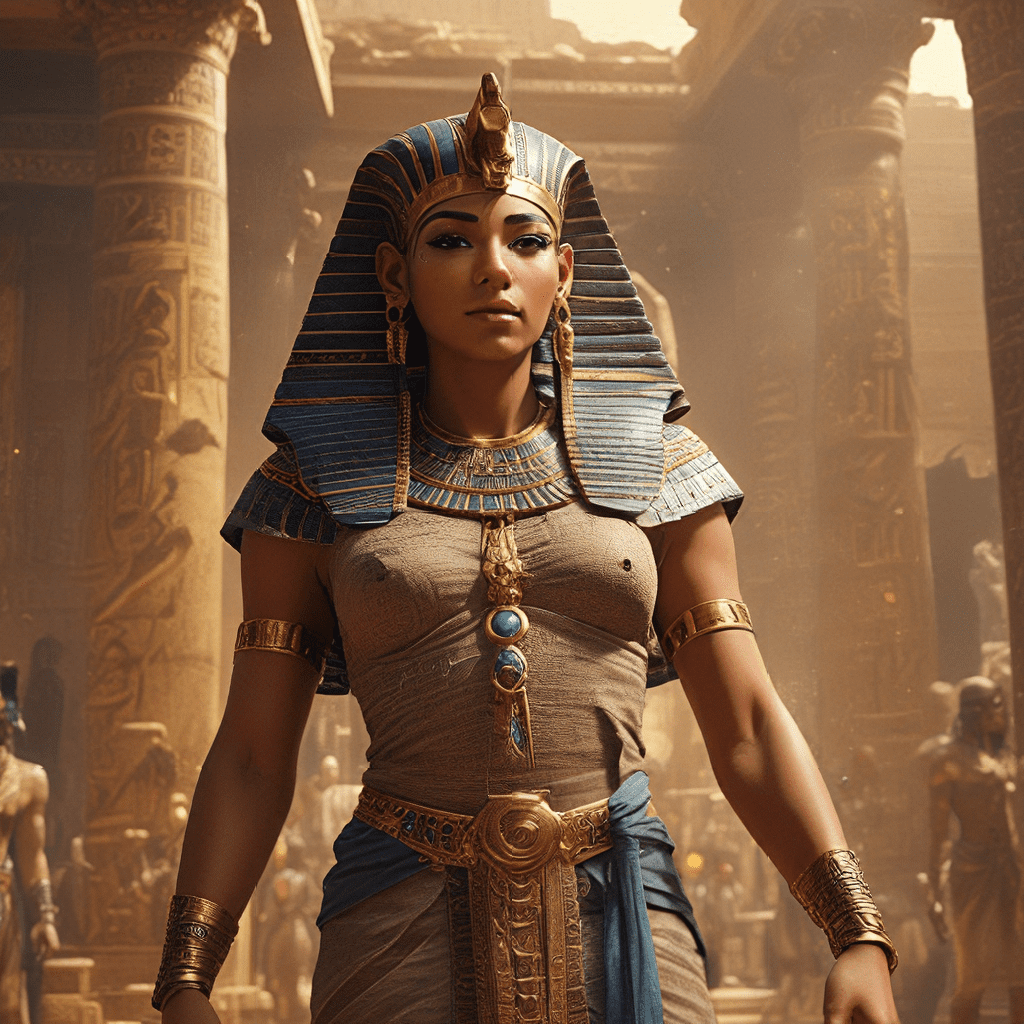The Divine Connection: Rituals and Ceremonies in Ancient Egypt
1. Introduction: The Importance of Ritual in Ancient Egyptian Life
Ancient Egyptians deeply believed in the power of rituals. They saw their everyday lives intertwined with the divine, and rituals were their way of interacting with the gods and goddesses. These rituals weren’t just about following religious rules; they were a way to maintain a harmonious balance in the universe, ensuring prosperity and protection. Their belief system revolved around the cycle of life, death, and rebirth, and rituals played a crucial role in navigating this journey.
Egyptians believed that the world was ruled by Ma’at, a concept representing order, truth, justice, and harmony. Rituals, performed with precise steps and symbolic actions, helped maintain this order, ensuring the sun rose each morning, the Nile River flowed, and crops grew abundantly. This belief in the divine connection permeated every aspect of ancient Egyptian life, from daily routines to grand celebrations.
2. The Temple as a Sacred Space
Temples were more than just buildings; they were gateways to the divine realm. Their architecture, often grand and imposing, reflected the power and majesty of the gods. The layout of a temple was symbolic, guiding worshippers through a carefully planned journey. They would start in the outer courtyard, a space for the common people to offer prayers and gifts. As they moved deeper into the temple, the space grew more sacred, leading them to the inner sanctum, the most holy area, where the god’s statue resided.
Temples were the focal point of religious life, serving as places of worship, offering, and celebration. Priests and priestesses, trained in religious knowledge and rituals, played a vital role in maintaining the temple’s sanctity. They conducted daily ceremonies, offering sacrifices and prayers, and ensured that the gods were appeased. The temple was a living representation of the divine, a place where the mortal and the immortal worlds intertwined.
3. Daily Rituals and Offerings
Ancient Egyptians believed that the gods needed to be appeased, and daily rituals were essential for maintaining this relationship. They began their day with prayers and offerings to the sun god Ra, thanking him for the gift of light and life. They offered food, incense, and libations, believing these gifts would please the gods and ensure their favor.
Each god had specific rituals and preferences. For example, offerings of milk and honey were thought to please Hathor, the goddess of love and beauty, while Osiris, god of the afterlife, received offerings of bread and beer. The Egyptians believed that by participating in these rituals, they were not only showing their devotion, but also ensuring their own well-being and protection.
4. Festivals and Celebrations
Ancient Egypt was a land of festivals and celebrations, each marking a significant event in the agricultural cycle or honoring a specific deity. These festivals brought the community together, offering a time for feasting, music, dance, and religious rituals. The most important festivals, like the Sed festival, celebrated the pharaoh’s renewed reign and the Opet festival, honored the god Amun-Re, were grand processions and celebrations.
These festivals weren’t just a time for merriment. They held deep religious significance, symbolizing the cycle of life, death, and rebirth. Rituals and offerings were performed during these festivals, seeking divine blessings for the land, the pharaoh, and the people.
5. Rituals for the Dead
The Egyptians believed that the afterlife was a continuation of life, and their rituals for the dead were designed to ensure a smooth transition into the next world. The most important aspect of their funerary practices was mummification. This intricate process involved preserving the body to prevent decomposition, allowing the soul to travel safely to the afterlife.
Along with mummification, the Egyptians placed amulets, jewelry, and other objects in the tomb, providing the deceased with everything they needed for their journey. They also inscribed funerary texts, like the Book of the Dead, on tomb walls and scrolls, offering guidance and protection for the deceased in the afterlife. These rituals were designed to ensure the soul’s safe passage and eternal life in the Field of Reeds.
6. The Role of Magic and Divination
Ancient Egyptians believed in the power of magic and used spells, amulets, and charms to protect themselves from harm and influence the course of events. They sought out priests and priestesses who were skilled in magic, relying on their knowledge of incantations, rituals, and herbal remedies. Amulets and charms were believed to possess supernatural powers, warding off evil spirits and bringing good fortune.
Divination was another important aspect of their religious practice. They used various techniques, including dream interpretation, scrying, and reading the entrails of animals, to seek guidance from the gods. This practice allowed them to interpret signs and omens, helping them make important decisions and navigate the uncertainties of life.
7. Rituals of Purification and Renewal
Cleanliness and purity were essential in ancient Egyptian religious practice. The Egyptians believed that physical and spiritual purity were interconnected, and they performed various rituals to cleanse themselves before entering temples or participating in religious ceremonies.
Ritual ablutions were an important part of these purification rituals. Water, a symbol of life and renewal, played a central role. The Egyptians would wash their hands and bodies, sometimes using special cleansing oils and herbs, to symbolize the washing away of impurities and the renewal of their spirit.
8. The Significance of Animal Worship
Animals held a special place in ancient Egyptian religion. Many deities were associated with specific animals, which were seen as manifestations of the divine. For example, the falcon was sacred to Horus, the god of the sky, and the jackal was associated with Anubis, the god of mummification.
These sacred animals were often worshiped and venerated in temples. Some animals were even mummified and buried with elaborate rituals. This practice highlighted the interconnectedness of the divine and the animal world, demonstrating the Egyptians’ profound respect for the natural world and its role in their religious beliefs.




